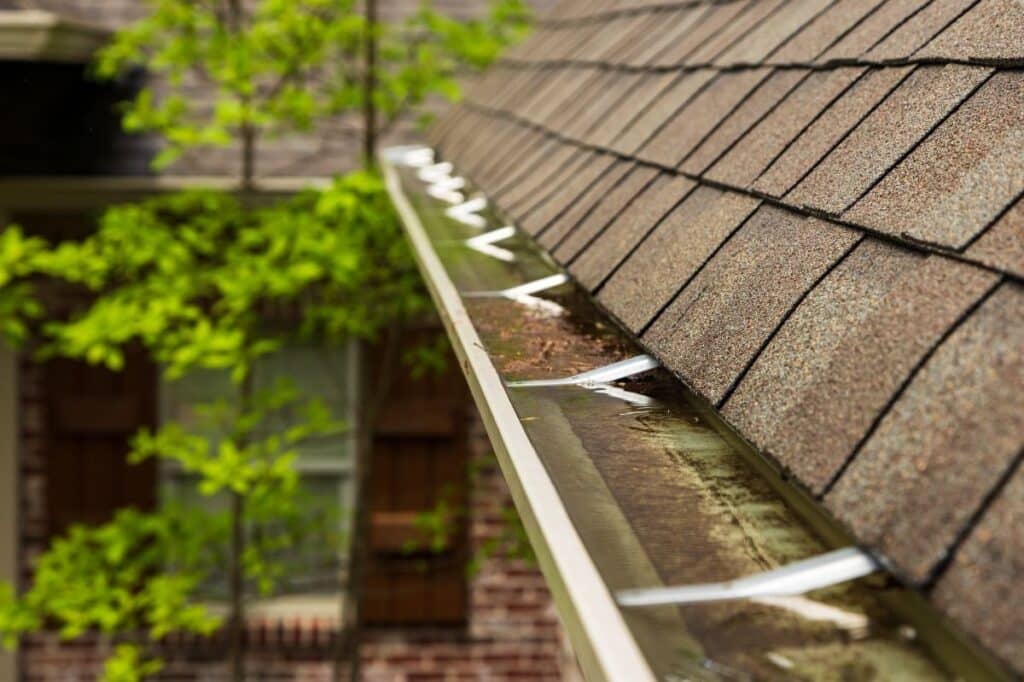This article discusses QLD duplex common property maintenance, focusing on how neglected shared areas can impact insurance responsibilities and claims.
Question: In our duplex, the other owner avoids maintenance. Will this affect our building insurance?
I’m one owner in a two-lot body corporate with a shared roof. I’ve noticed deterioration around the eaves and fascia that looks like it needs repair, but the other owner doesn’t think it’s serious. If we delay the work and the damage worsens during a storm, could our insurer reject a future claim because we were aware of the issue? Should I contact the insurer to disclose the problem?
If the other owner keeps avoiding maintenance, can I arrange work through the body corporate and pay for repairs from the sinking fund?
Answer: A cooperative approach will usually result in a faster and more cost-effective resolution.
Based on the information provided, it appears your duplex is likely registered under a building format plan, meaning the roof forms part of the common property. Under section 31 of the Body Corporate and Community Management (Specified Two-lot Schemes Module) Regulation 2011, the body corporate (in your case, the two lot owners together) is responsible for maintaining the common property in good and structurally sound condition, including roofing structures that protect the lots.
Body Corporate Responsibility for Repairs
If the roof is damaged, the body corporate has a statutory obligation to ensure it is maintained and kept structurally sound. In practice, there may be an element of maintenance involved, particularly with roof leaks.
Where the issue is purely maintenance-related (for example, worn sealant, blocked gutters, or general deterioration), the body corporate must pay for these works directly, as they form part of the maintenance obligations rather than an insurance event.
However, if the roof is damaged (for example, in a storm) or a maintenance issue has caused resultant damage (for example, water ingress damaging ceilings or walls), that consequential damage may be claimed under the insurance policy, provided it meets the policy’s terms, conditions and exclusions.
If one owner is unwilling to cooperate, the other owner (as part of the body corporate) can take reasonable steps to have the work arranged, and the costs can be recovered in accordance with each owner’s lot entitlement. If you cannot reach an agreement, the matter may be referred to the Office of the Commissioner for Body Corporate and Community Management for dispute resolution.
Insurance Implications
Most strata and building insurance policies contain exclusions for non-rectification of known defects, errors, or omissions. If you are aware of an issue (such as a roof leak) and do not take reasonable steps to rectify it, the insurer may later decline a claim arising from that defect.
Insurance policies generally respond to sudden and accidental damage, not gradual deterioration or long-term water ingress. If the problem develops over time, it may not fall within the scope of cover.
Duty of Disclosure
Under the Insurance Contracts Act 1984, there is a duty of disclosure requiring you to inform your insurer of any matter you know (or could reasonably be expected to know) that might be relevant to their decision to insure you.
Technically, an unrepaired leak or known defect should be disclosed at renewal. While the insurer must prove that non-disclosure was deliberate or materially influenced their decision (a high threshold), failure to disclose could still give them grounds to reduce or deny a claim, or to refuse renewal, if the defect contributed to a later loss.
Final Comment
While the legislation and insurance considerations are clear, in practice, it is always best to seek agreement with the other owner rather than escalating the issue into conflict. A cooperative approach will usually result in a faster and more cost-effective resolution, maintaining good neighbourly relations and ensuring the property remains well protected and insurable.
Tyrone Shandiman Strata Insurance Solutions E: tshandiman@iaa.net.au P: 1300 554 165
This information is of a general nature only and neither represents nor is intended to be personal advice on any particular matter. Shandit Pty Ltd T/as Strata Insurance Solutions strongly suggests that no person should act specifically on the basis of the information in this document, but should obtain appropriate professional advice based on their own personal circumstances. Shandit Pty Ltd T/As Strata Insurance Solutions is a Corporate Authorised Representative (No. 404246) of Insurance Advisenent Australia AFSL No 240549, ABN 15 003 886 687.
This post appears in the December 2025 edition of The QLD Strata Magazine.
Have a question or something to add to the article? Leave a comment below.
Read next:- QLD: Q&A Responsibility to Repair Common Property and Defects
- QLD: Q&A Renovations, Altering Common Property and Changing the Appearance of the Lot
- QLD: Q&A Renting, Selling or Reallocation – Exclusive Use of Common Property
Visit our Maintenance and Common Property OR Strata Legislation QLD.
Looking for strata information concerning your state? For state-specific strata information, take a look here.
After a free PDF of this article? Log into your existing LookUpStrata Account to download the printable file. Not a member? Simple – join for free on our Registration page.
